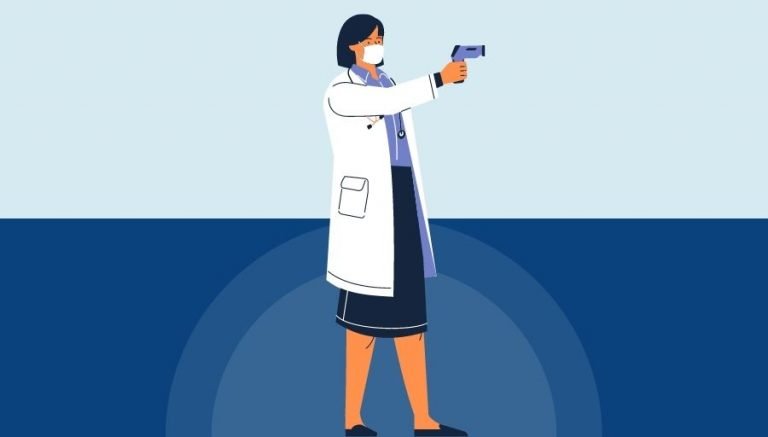(2022) How To Code Amenorrhea ICD 10 – List With Codes & Guidelines
This article will outline the causes, symptoms, diagnosis, treatment and the ICD 10 CM codes for Amenorrhea.
Amenorrhea ICD 10 Causes
Amenorrhea ICD 10 can occur for a variety of reasons. In the normal course of life, for natural reasons such as pregnancy, breastfeeding or menopause someone may experience an amenorrhea ICD 10. Some people who take birth control pills or oral contraceptives do not get periods. This is normal, and like other side effects of medication, it is usually a sign of a medical problem. After stopping the birth control pill, it may take some time for regular ovulation and menstruation to return.
Lifestyle factors can also contribute to amenorrhea ICD 10. Certain medications can cause menstruation to stop, including some kinds of antipsychotics, cancer chemotherapy, antidepressants, blood pressure medications and allergy medications. Contraception, whether injected or implanted, can cause amenorrhea ICD 10, as can any type of intrauterine device.
Several factors contribute to the loss of phases in athletes including low body fat, stress and high energy expenditure together. Women who participate in activities that require strict training, such as ballet, may find that their menstrual cycle is interrupted. Women with eating disorders such as anorexia or bulimia can stop having periods due to abnormal hormonal changes. Low body weight (10% of normal weight) can interrupt many hormonal functions in the body and stop ovulation.
Psychological stress can alter the function of hypothalamus, the area of the brain that controls hormones that regulate a menstrual cycle. As a result, ovulation and menstruation can come to a halt. Overactive Thyroid Hypothyroidism (hypothyroidism) can cause menstrual disorders, including amenorrhea ICD 10. PCOS causes high, persistent hormone levels that fluctuate above or below the levels of the normal menstrual cycle. Regular menstrual periods can be resumed when stress decreases.
A non-cancerous, benign tumor on the pituitary gland that disrupts the hormonal regulation of menstruation. In some women, ovarian supply decreases after the age of 50 and menstruation stops. The menopause usually begins around the age of 50.
Ashermans syndrome is a condition in which scar tissue in the lining of the uterus forms that may occur during dilation and curettage (D & C, caesarean section) or during treatment of uterine fibroids. Uterine scarring prevents normal accumulation and excretion of the uterine lining. Problems with the sex organs themselves can also cause amenorrhea ICD 10.
During the fetal development, problems can occur which lead to the loss of parts of the reproductive system such as the uterus, cervix and vagina. If the reproductive systems are not fully developed, menstrual cycles are not possible later in life.
There may also be structural abnormalities in the vagina. Obstructions of the vagina can prevent visible menstrual bleeding. The membrane wall in the vagina can block the flow of blood from the uterus to the cervix.
Amenorrhea ICD 10 Symptoms
The main symptom is the absence of a period. Other symptoms depend on the cause. A patient may also experience hot flashes, leaking nipples, vaginal dryness, headaches, blurred vision, acne (excess hair growth on the face and body).
Amenorrhea ICD 10 Diagnosis
The patient should consult their GP or gynaecologist immediately if they think they may have amenorrhea ICD 10. If they have never menstruated, a doctor will check their medical history and perform an examination. Regular body and pelvic examinations can show signs of puberty. If there is a secondary amenorrhea ICD 10, the doctor can perform a pregnancy test.
If negative, he or she will conduct an investigation and review their medical history. A doctor may order additional tests to rule out or determine the cause, such as:
- Blood tests for thyroid function (thyroid stimulating hormone (TSH)
- Ovarian function (follicle stimulating hormone ( FSH)
- Luteinization hormone levels (LH)
- Testosterone levels (male hormone levels in PCOS)
- Estrogen levels (female hormone levels)
- A genetic test to search for mutated FMR1 genes
- A karyotype test that examines the chromosomes
- An imaging test that can look at the female organs
Amenorrhea ICD 10 Treatments
Treatment depends on the cause of thyroid disease. The thyroid can be caused by the following factors: thyroid function, thyroid stimulating hormone (TSH), ovarian function, follicle stimulating hormone (FSH) and luteinizing hormone (LH) and testosterone levels (male hormone).
This does not guarantee that a normal menstrual cycle will occur. It depends on the underlying cause. If there is a genetic or physical problem with the reproductive organs, surgery may be necessary. Treatment of primary amenorrhea ICD 10 begins with vigilant waiting, depending on the age of the subjects and the results of ovarian function tests. There may be a family history of late menstruation or a period that sets in late or at another time.
If emotional or psychological stress is a problem, counselling can help. If a person exercises regularly, a change in exercise plans or diet can help stabilize the monthly cycle.
This can happen for a number of reasons. A health condition can cause weight loss. A doctor can test it and, if necessary, offer treatment. An eating disorder is one possibility, and treatment can include weight gain, counseling with a psychiatrist or nutritionist. A person may also need to be monitored during weight gain.
When menstruation stops, an under active thyroid doctor may prescribe treatment with thyroxine, a thyroid hormone. Hormone replacement therapy (HRT) can cause menstruation to return. A doctor may suggest more appropriate treatment. If PCOS leads to obesity, a doctor may recommend a weight loss diet.
The menopause can start earlier than 50 years or 40 years earlier. A family history can influence the onset of menopause. In people at higher risk of osteoporosis, menopause can start earlier. A person may need treatment to prevent the disease.
ICD 10 CM Codes For Amenorrhea
ICD 10 CM N91.2: Amenorrhea unspecified
ICD 10 CM N91.0: Primary Amenorrhea
ICD 10 CM N91.1: Secondary Amenorrhea



